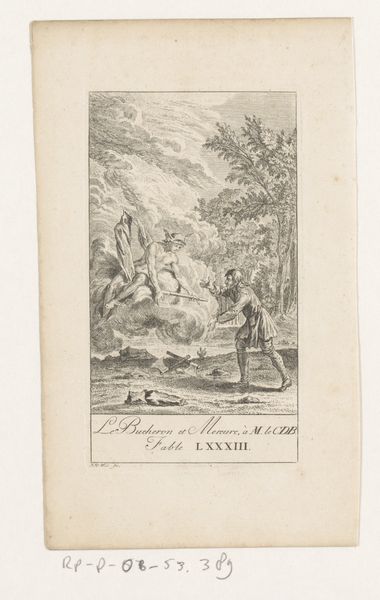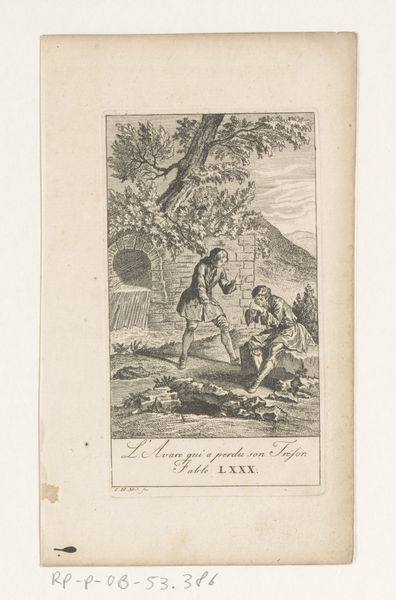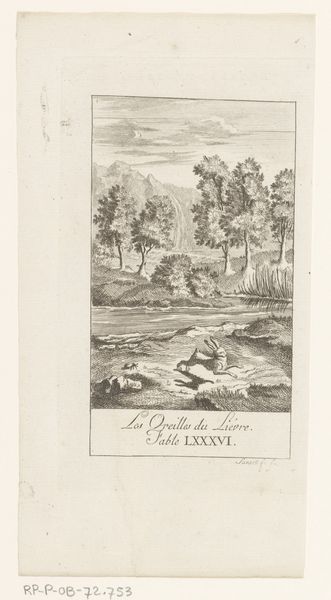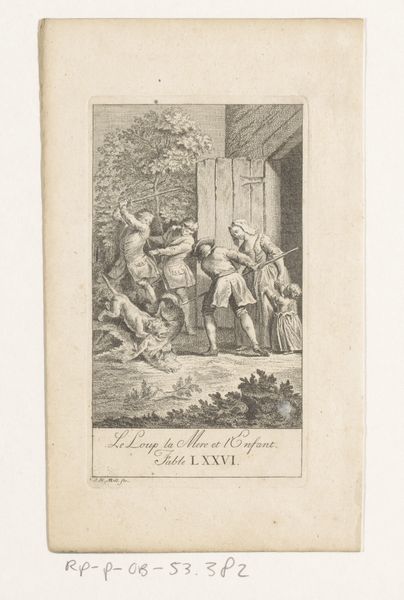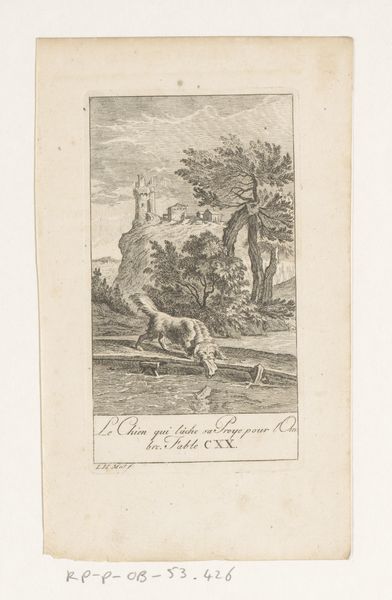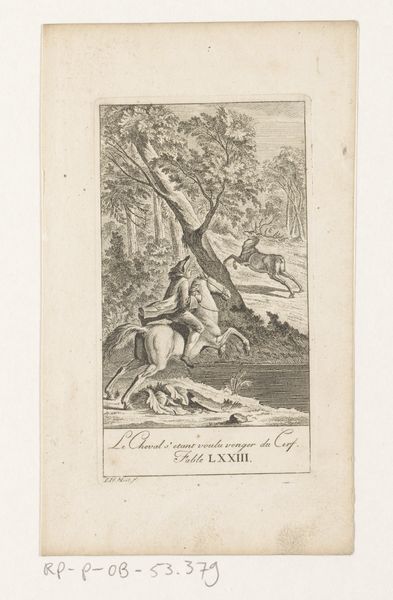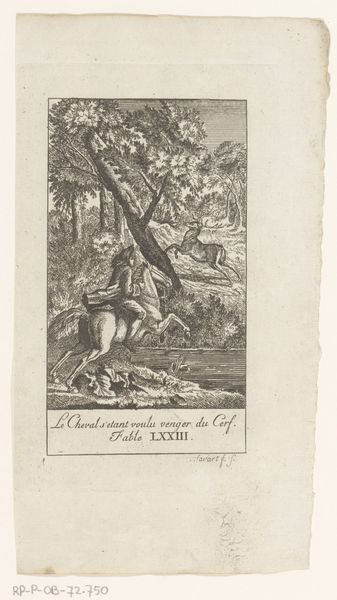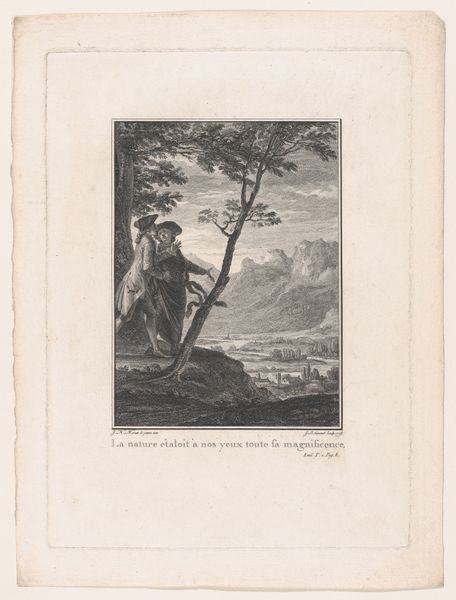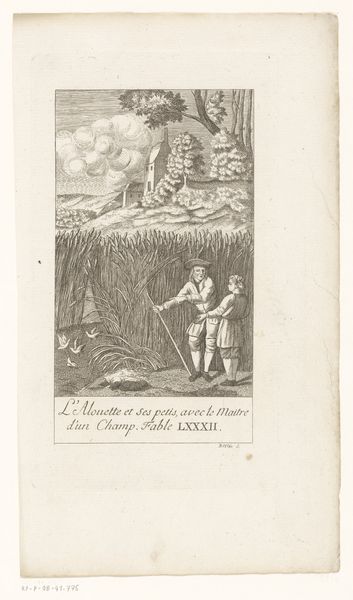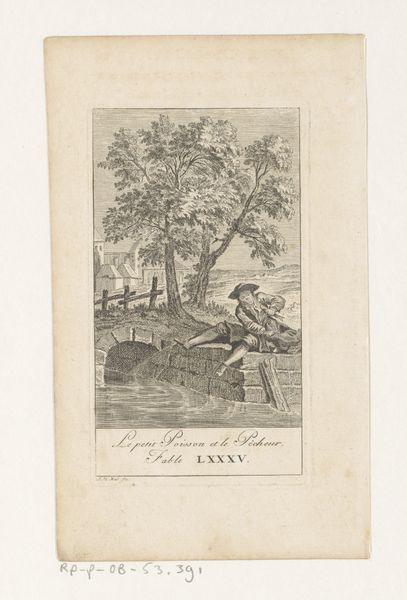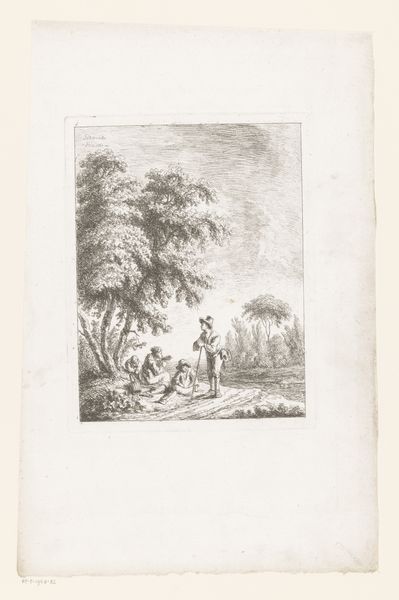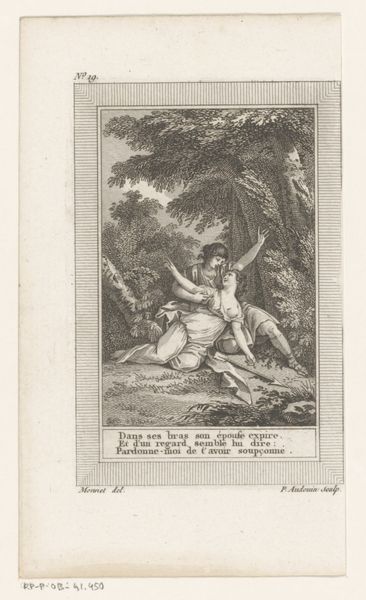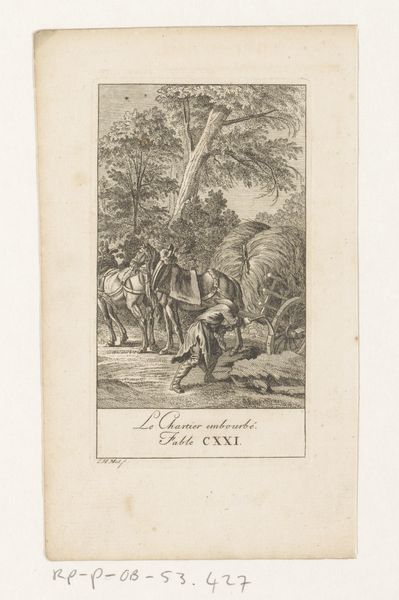
print, etching
#
narrative-art
#
baroque
# print
#
etching
#
landscape
#
genre-painting
Dimensions: height 142 mm, width 81 mm
Copyright: Rijks Museum: Open Domain
Curator: Looking at Johann Heinrich Meil's etching, "Fabel van de leeuwerik en zijn kleintjes" from 1758... what strikes you initially? Editor: The detailed lines are amazing. I like the overall rustic and detailed mood. But what grabs me is the contrast between the natural landscape and what seems to be agricultural production. It almost seems that they don't go together that well. How do you read this etching? Curator: As a materialist, I'm drawn to the image’s representation of labor and land. This etching doesn't just show a pretty landscape; it depicts a landscape actively being worked. Note the way Meil meticulously renders the wheat or rye – a direct representation of agricultural output, a commodity produced for consumption. Editor: Ah, I see! The process of creating that food. Curator: Precisely! This goes beyond a simple idyllic scene. How do the figures engage with that process? The standing figures pointing, observing, perhaps negotiating. What decisions will impact labor, harvests, or consumption of it all? The building itself could be argued as central, the product of intensive labor and a clear sign of class distinction and economic power over land ownership. Editor: So, rather than focusing on the art, we are talking about its economic impact. Curator: Indeed! Consider this etching not just as art, but as documentation of a specific moment in the economic history of agricultural production and societal infrastructure, using the etching and printing process as a form of disseminating propaganda. This expands how we approach its meaning and legacy. What do you think now? Editor: I never considered it from an economical or historical perspective, seeing art simply as art. It seems that the etching is more like a tangible form of understanding agricultural practice as material. Curator: Precisely. These elements, inextricably linked, deepen the artwork's resonance.
Comments
No comments
Be the first to comment and join the conversation on the ultimate creative platform.
